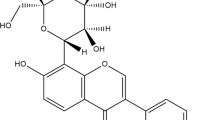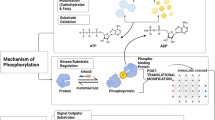Abstract
Fibroblast cultures were used to study the effect of crude venom and six venom protein fractions (F2–F7) fromWalterinnesia aegyptia) on their metabolic activity. This was done by incubation of six fibroblast cultures with 10 μg of crude venom for 3 h at 37°C. The activities of phosphofructokinase, lactate dehydrogenase, and citrate synthase were significantly lowered upon incubation with all fractions except F2. Glycogen phosphorylase activity was significantly increased, leading to a significant concurrent drop of glycogen content. This effect was only seen for fractions F3 and F5. Creatine kinase activity and cellular ATP levels rose significantly upon incubation with all venom proteins except fractions F2 and F7. Increases were seen for aspartate and alanine amino-transferases by all venom proteins except fractions F2 and F4. Incubation of cell sonicates with all the venom proteins did not significantly alter activities of any of the parameters. Thus, fibroblasts in culture under such conditions appear to mobilize glycogen, phosphocreatine, and protein for ATP production to compensate for decreased glucose.
Similar content being viewed by others
Abbreviations
- ALT:
-
alanine aminotransferase
- AST:
-
aspartate aminotransferase
- ATP:
-
adenosine 5′-triphosphate
- CS:
-
citrate synthhase
- GP:
-
glycogen phosphorylase
- LDH:
-
lactate dehydrogenase
- PFK:
-
phosphofructokinase
References
Al-Sadoon MK. Survey of the reptilian fauna of the kingdom of Saudi Arabia. I. The snake fauna of the Central region. J King Saud Univ 1, A. Science. 1989;1(2):53–61.
Al-Saleh SS, Nayyar R, Al-Sadoon MK, Al-Jafari AA, Duhaiman AS. A rapid fractionation method for the desert cobra venom (Walterinnesia aegyptia). Med Sci Res. 1994;22:659–60.
Al-Shammary FJ, Ghneim HK, Al-Sadoon MK, Na'seh AM, Neelofur AM, Saleem MM. The effect of crudeCerastes cerastes gasperetti venom on enzyme activities in cultured fibrobasts. Med Sci Res. 1992;21: 229–31.
Bieber AL. Metal and nonprotein constituents in snake venom. In: Lee CY, ed. Handbook of experimental pharmacology. Snake venoms. Berlin: Springer-Verlag; 1979;52:295–308.
Bougis PE, Marchot P, Rochat H. Characterisation of Elapidae snake venom components using optimised reverse-phase high performance liquid chromatographic conditions and screening assays for neurotoxin and phospholipase A2 activities. Biochemistry. 1986;25:7235–43.
Bradley JB, Bhatti R. Snake venom components and their cross-reactivity: a review. Biochem Cell Biol. 1989;67:597–601.
Dreisbach RH. In: Handbook of Poisoning. Hemel Hempstead: Appleton and Lange Medical Publications; 1977:439–87.
Ghneim HK. Enzymatic variations related to glucose and glycogen catabolism in serially subcultured human fibroblasts. Cell Physiol Biochem. 1994;4:44–56.
Ghneim HK, Al-Shammary FJ. Kinetics of the effect of crudeCerastes cerastes gasperetti venom on enzyme activities in cultured fibroblasts. Med Sci Res. 1993;21:229–31.
Ghneim HK, Noy G, Bartett K. Biotin-dependent carboxylases and cultured human fibroblasts. Biochem Soc Trans. 1981;9:405–6.
Hagihara S, Komor Y, Tu AT. Proteolytic specificity of hemorrhagic toxin b fromCrotalus atron venom. Comp Biochem Physiol. 1985;82C:21–8.
Helmreich F, Cori CF. Glycogen phosphorylase assay in tissue homogenates. Proc Natl Acad Sci USA. 1964;51:131–8.
Lowry OH, Rosebrough NJ, Farr AL, Randall RJ. Protein measurement with the Folin phenol reagent. J Biol Chem. 1951;193:265–75.
Mendicino J, Husein AI, Medicus R, Kratowich N. Isolation and properties of phosphofructokinase. In: Methods in enzymology. New York: Academic Press; 1975;42:382–3.
Ohsaka A, Ikegawa H, Kondo H, Kondo S. Two hemorrhagic principles derived from Habu snake venom and their differences in zone electrophoresis. Jpn J Med Sci Biol. 1960;13:73–9.
Ownby CL, Colberg TR. Characterisation of the biological and immunological properties of fractions of Prairie Rattlesnake (Crotalus viridis viridis) venom. Toxicon. 1987;25:1329–42.
Reitman S, Frankel S. A colorimetric method for the determination of serum GOT and GPT. Am J Clin Pathol. 1957;28:56–9.
Seifter S, Dayton S, Novic B, Muntwyler E. The estimation of glycogen with the anthrone reagent. Arch Biochem. 1950;25:191–200.
Serere PA, Brazil H, Gonen L. Citrate synthase assay in tissue homogenates. Acta Chem Scand. 1963;17:S129–34.
Szasz G, Gruber W, Bernt E. Glycogen phosphorylase assay in tissue homogenates. Proc Natl Acad Sci USA. 1976;51:131–8.
Vassault A. Wahlefeld AW, Deneke U. Lactate dehydrogenase. In: Bergmeyer J. Grassl M, eds. Methods of enzymatic analysis. Verlag Chemie; 1983;3:118–38.
Williamson JR, Corkey BE. Assays of intermediates of the critic acid cycle and related compounds by fluorometric enzyme methods. In: Lowenstein JM, ed. Methods of enzymology. New York: Academic Press; 1969;13:434–513.
Author information
Authors and Affiliations
Rights and permissions
About this article
Cite this article
Al-Saleh, S.S. The effect of the desert cobra (Walterinnesia aegyptia) crude venom and its protein fractions on the metabolic activity of cultured human fibroblasts. Cell Biol Toxicol 12, 127–134 (1996). https://doi.org/10.1007/BF00148166
Accepted:
Issue Date:
DOI: https://doi.org/10.1007/BF00148166




